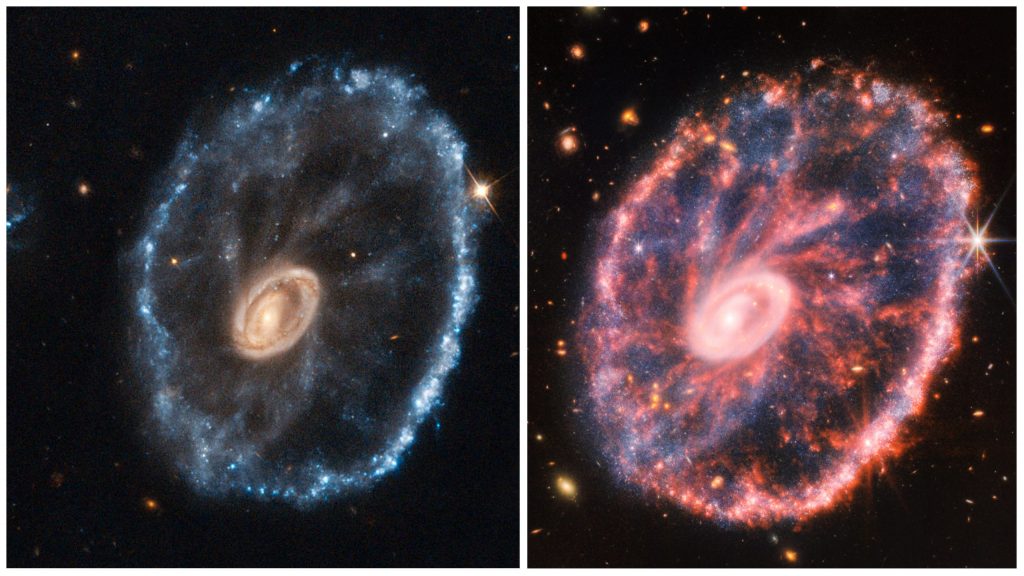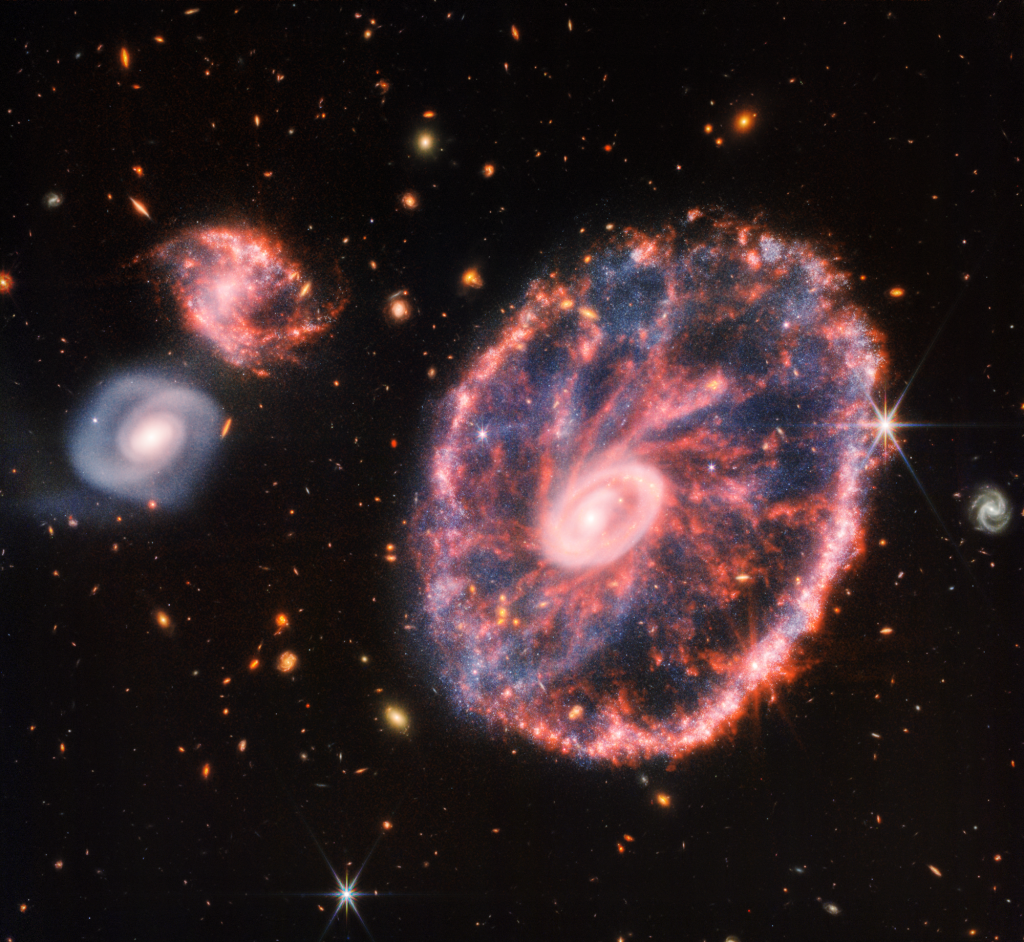- NASA and the European Space Agency released new James Webb Space Telescope images of the Cartwheel Galaxy on Tuesday.
- The Cartwheel Galaxy is a ring galaxy 500 million light-years away, in the Sculptor constellation.
- Webb's infrared camera captured new details of the galaxy that the Hubble Space Telescope could not.
The James Webb Space Telescope captured a snapshot of the Cartwheel Galaxy in greater detail than ever before, with new photos released by NASA and its partners on Tuesday.
Located 500 million light-years away in the Sculptor constellation, the Cartwheel Galaxy is a rare ring galaxy that formed following a collision between a large spiral galaxy and a smaller one, giving it the appearance of a wagon wheel. It has two rings — a bright inner ring and a colorful outer one that ripple outward from the middle of the collision.
The outer ring has been expanding from the center of the collision for around 440 million years. When it expands and hits surrounding gas, stars form.
In the photo above, pockets of star formation appear as blue dots in the red swirls of dust. To the left of the Cartwheel Galaxy, Webb captured two other galaxies in the above image.
The Cartwheel Galaxy was "presumably a normal galaxy like the Milky Way before its collision" and will continue to change in shape and structure in the future, NASA said a press release. The new image reveals details about star formation and the black hole at the center of the galaxy, and sheds light on how the galaxy has evolved over billions of years, the space agency said.

The form that the Cartwheel Galaxy will eventually take is still a mystery.
"However, this snapshot provides perspective on what happened to the galaxy in the past and what it will do in the future," the European Space Agency said in a press release.
Webb's infrared camera can see through cosmic dust that obscured the galaxy from view when other telescopes, like the Hubble Space Telescope, observed it. Science operations for the powerful space-based observatory started last month, so it's sure to deliver more high-detail views of the cosmos.

